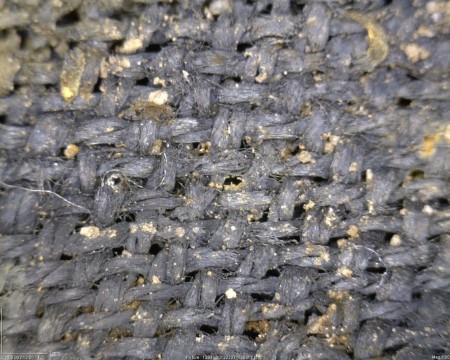Making thread in Bronze Age Britain
Published: 26 July 2018
Bronze Age Britons spliced plant fibres together to make cloth rather than spinning, a new study has found.
Bronze Age Britons spliced plant fibres together to make cloth rather than spinning, a new study has found.
The study, published this week in the journal Archaeological and Anthropological Sciences identified that the earliest plant fibre technology for making thread in Early Bronze Age Britain and across Europe and the Near East was splicing not spinning. 
In splicing, strips of plant fibres – flax, nettle, lime tree and other species – are joined in individually, often after being stripped from the plant stalk directly and without or with only minimal retting – the process of introducing moisture to soften the fibres.
Splicing has previously been identified in pre-Dynastic Egyptian and Neolithic Swiss textiles, but the new study shows that this particular type of thread making technology may have been ubiquitous across the Old World during prehistory.
The invention of spinning appears to coincide with urbanisation and population growth, as well as increased human mobility across the Mediterranean during the first half of the 1st millennium BC, requiring larger and faster ships that relied on sail cloth.
Among the finds analysed for this study are charred textile fragments from Over Barrow in Cambridgeshire, dated to the Early Bronze Age (c. 1887-1696 BC). The site was excavated by the Cambridge Archaeological Unit.
Archeology lecturer Dr. Susanna Harris of the University of Glasgow, co-author of the paper and expert in British Bronze Age textiles, said: “We can now demonstrate that this splicing technology was also present in Britain. It’s exciting because we think the past is familiar, but this shows life was quite different in the Bronze Age.”
“Sites like Over Barrow in Cambridgeshire contained a burial with remains of stacked textiles, which were prepared using strips of plant fibre, spliced into yarns, and woven into textiles”.
“It had always been assumed that textiles were made following well-known historical practices of fibre processing and draft spinning but we can now show people were dealing with plants rather differently, possibly using nettles or flax plants, to make these beautiful woven textiles.”
Lead author, Dr Margarita Gleba, researcher at the McDonald Institute for Archaeological Research, University of Cambridge, said: “The identification of splicing in these Early Bronze Age and later textiles marks a major turning point in scholarship. The switch from splicing to draft spinning took place much later than previously assumed.”
The paper is published in open access in the journal Archaeological and Anthropological Sciences. The research was funded by the European Research Council.
First published: 26 July 2018
<< July

